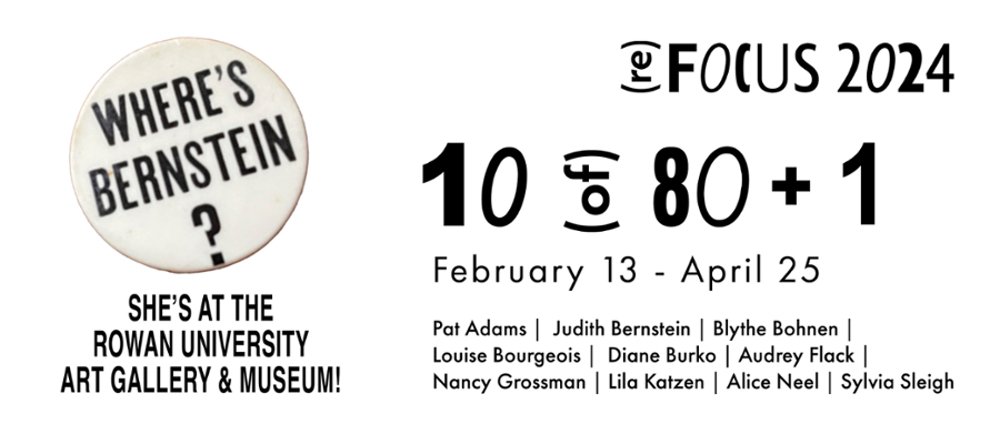10 of 80 + 1
10 of 80 + 1
10 of 80 + 1
February 13 - April 25, 2024
CASE Gallery @ Westby Hall
(re)FOCUS celebrates the 50th anniversary of Philadelphia Focuses on Women in the Visual Arts/1974. It was one of the first large-scale surveys of the work of contemporary American women artists, signaling the inception of the American Feminist Art Movement. Like its 1974 predecessor, (re)FOCUS is a collaboration among large, small, and diverse visual arts institutions throughout the Philadelphia region. As a participating venue, Rowan University Art Gallery and Museum presents 10 of 80 + 1 featuring ten artists from our permanent collection who were in the original 1974 exhibition including Judith Bernstein. Her work, Horizontal, was censored from the 1974 show and in response, buttons were created by the organizers in protest of Berstein's removal. 10 of 80 + 1 will raise the issue of censorship as part of the exhibition with an essay by Kristin Qualls examining conditions existing in 1974 that led to the censorship of Berstein's work.
Participating artists include:
Pat Adam, Judith Bernstein, Blythe Bohnen, Louise Bourgeois, Diane Burko, Audrey Flack, Nancy Grossman, Lila Katzen, Alice Neel, Sylvia Sleigh.
10 of 80 + 1 complements our permanent installation, The Sister Chapel, created in 1978 as one of the most significant feminist collaborative installations of that time. Artists that comprise this installation include June Blum, Maureen Connor, Martha Edelheit, Elsa M. Goldsmith, Shirley Gorelick, Ilise Greenstein, Betty Holliday, Diana Kurz, Cynthia Mailman, Alice Neel, Sylvia Sleigh, May Stevens, and Sharon Wybrants.
The Sister Chapel was conceived by Ilise Greenstein, who envisioned a monumental “hall of fame” in which women’s achievements would be presented from a female perspective. Using a nominal pun on the Sistine Chapel, she proposed a secular, nonhierarchical alternative to the patriarchal system embodied in Michelangelo’s renowned ceiling fresco. Greenstein collaborated with twelve other women, whose individual contributions shaped the character and appearance of The Sister Chapel. Diverse contemporary and historical women, deities, and conceptual figures populate the all-female pantheon of The Sister Chapel. Above them, Greenstein’s enormous abstract ceiling features a mirrored center to remind visitors that there is no limit to women’s potential.
The Art of Censorship: Judith Bernstein and the Philadelphia Civic Center Museum essay.
Turning the Screw Back: (re)FOCUS Redresses Censorship of Feminist Art, Jersey Arts
'10 of 80 + 1 Exhibition challenges art censorship & celebrates women in the visual arts', The Whit
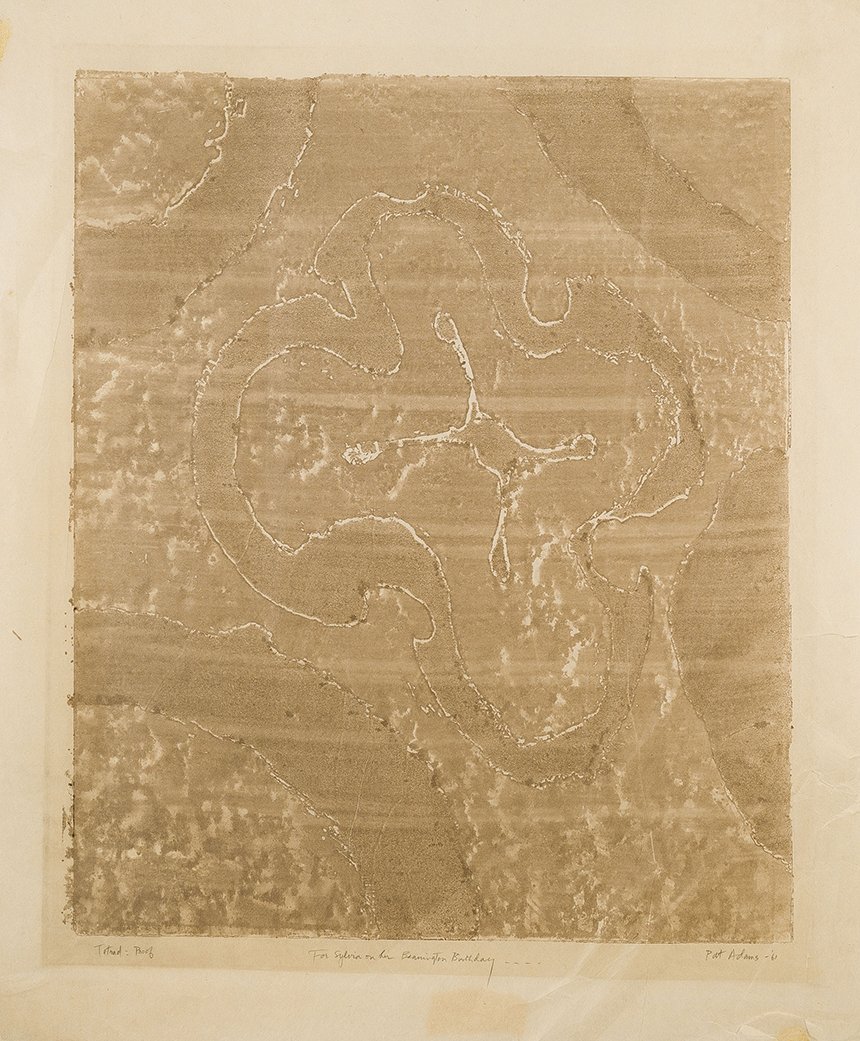
Pat Adams
Tetrad, 1961
Etching, proof
18 3/16 x 15 1/16 inches (impression), 24 ⅝ x 19 ⅞ (sheet)
Sylvia Sleigh Collection
2011.47
When commenting about her work in 2003, Pat Adams explained, “My painting yields more to qualities than ideas, more to matter than its naming.” The same is certainly true of this print, which was created while she was living in Bennington, Vermont. In 1960, the art critic Dore Ashton characterized Adams’s work as “intimist” and observed that “she seeks to find and describe what is ‘within,’ the innermost secrets of the universe.”
Pat Adams (b. 1928) is a Modernist painter who studied at University of California, Berkeley (BA) and California College of the Arts, University of the Pacific, School of the Art Institute of Chicago, and the Brooklyn Museum Art School. Her work is influenced by her international travels. She taught for many years at Bennington College.
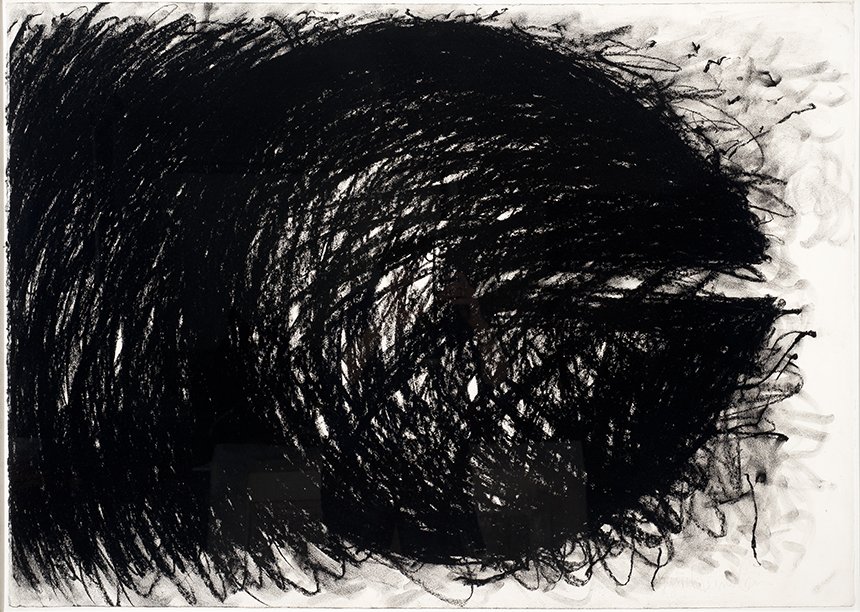
Judith Bernstein
Horizontal, 1973
Charcoal on paper
29 ⅝ x 41 ½ inches (30 ⅞ x 42 ¾ x 1 ¼ inches framed)
Sylvia Sleigh Collection
2011.48
Bernstein gained prominence for her distinctive series of biomorphic screw drawings, initiated in 1969. These expansive artworks boldly appropriate the screw as a symbol of phallic oppression, challenging its association with the colloquial expression "being screwed" while exuding a foreboding sense of power.
Among her notable works, Horizontal (1973) faced censorship during the exhibition Focus: Women’s Work—American Art in 1974 at the Philadelphia Civic Center Museum. The piece was deemed to "lack redeeming social value," a phrase commonly employed in relation to pornography. In response to this censorship, a petition letter circulated in protest, garnering signatures from influential figures such as Clement Greenberg, Linda Nochlin, Lucy Lippard, Louise Bourgeois, and Marcia Tucker, the New Museum's Founding Director.
10 of 80 + 1 aims to correct the oversight of Judith Bernstein's exclusion from the original Focus show by reintegrating her into the narrative. The title itself emphasizes this action, symbolizing the 10 artists from the collection who were part of the initial 81 included in the 1974 Focus exhibition, with Bernstein conspicuously absent. The "+ 1" signifies not only Bernstein's reinstatement among the participating artists but also the inclusion of an original work on paper of Horizontal, a unique feature exclusive to the (re)FOCUS series of events and exhibitions, making CASE the sole venue with an authentic Bernstein piece.
Originating in 1974, the “Where’s Bernstein” buttons were initially created to protest Bernstein's removal from the exhibition and were worn by participants and visitors to the 1974 exhibition. In a performative reenactment, the (re)FOCUS organizers have reproduced these buttons, connecting the contemporary audience to the original protest and highlighting the enduring significance of Bernstein's artistic presence.
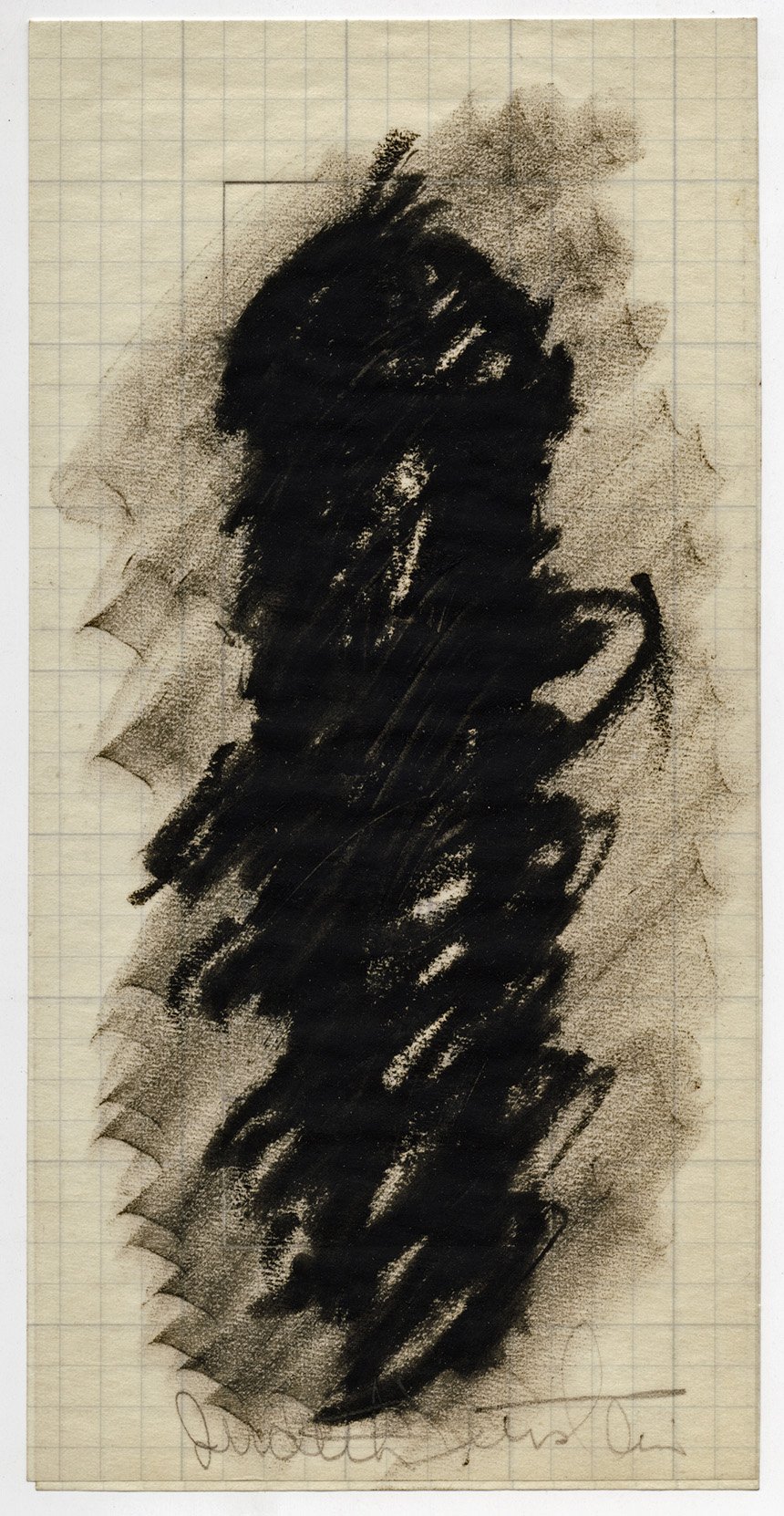
Judith Bernstein
Small Screw, 1974
Graphite and charcoal on graph paper
8 ⅞ x 4 ⅜ inches
Sylvia Sleigh Collection
2011.76
This small-scale version of Judith Bernstein’s hairy screw motif was sent as a gift to Sylvia Sleigh, who was hospitalized and underwent surgery in August 1974. Behind the drawing, Bernstein wrote, “Get Well Quick!” Sylvia Sleigh had recently joined A.I.R. Gallery (est. 1972), where Judith Bernstein was a founding member.
Judith Bernstein (b. 1942) is an abstract painter. She studied at Pennsylvania State University (BS, MEd, art education) and Yale University (BFA, MFA, fine art). She was a founding member of the all-women’s cooperative, A.I.R. Gallery and spent many years teaching at SUNY Purchase College.
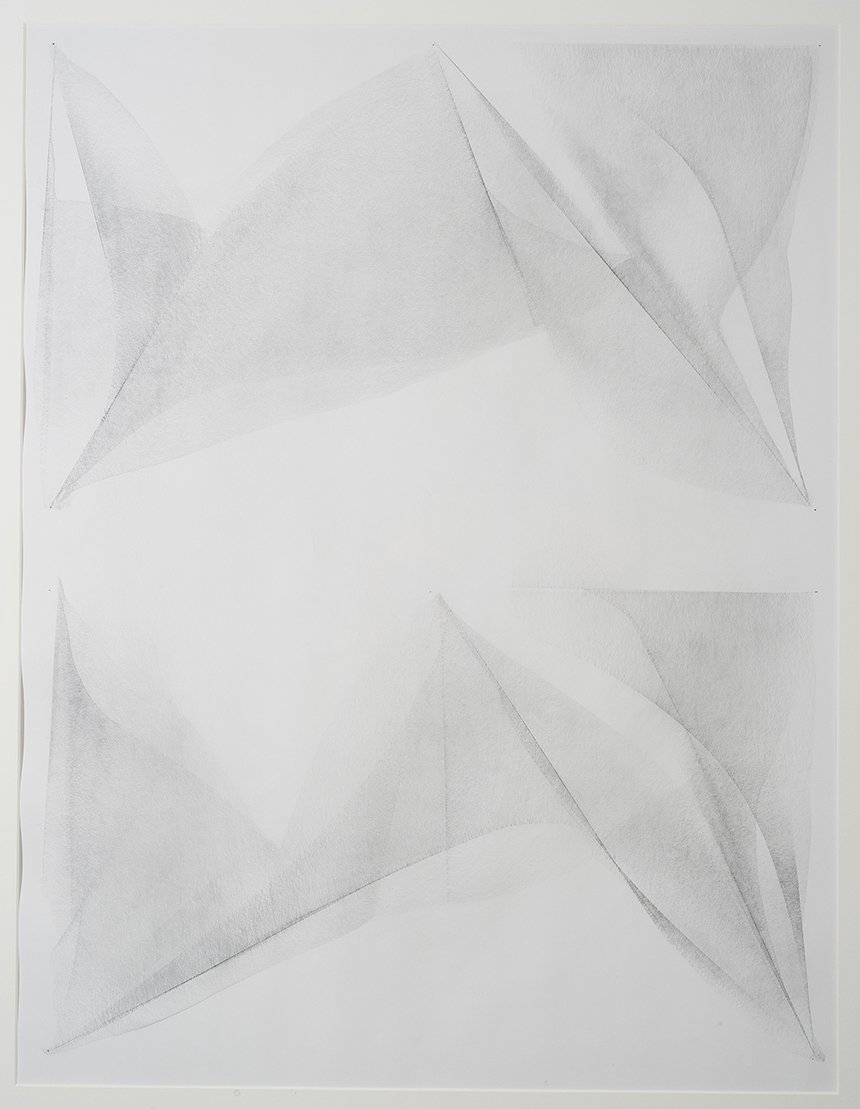
Blythe Bohnen
Motion touching 5 points, overlapped by motion touching 5 points, 1975
Graphite on paper,
28 ½ x 22 ½ inches (30 ¼ x 25 ¼ x ¾ inches framed)
Sylvia Sleigh Collection
2011.8
This drawing is from a series in which Blythe Bohnen emphasized gesture and worked monochromatically to eliminate content-based interpretations of her art. Using the edge of a graphite bar, she drew in a continuous motion, after which she repeated the gesture directly below it. Although they visualize the same motion, subtle variations underscore their hand-made qualities.
Blythe Bohnen (1940–2023) was an abstract painter and photographer. She studied at Smith College (BA, art), Boston University (BFA, applied art), and Hunter College (MFA, painting). She was a founding member of the all-women’s cooperative, A.I.R. Gallery.
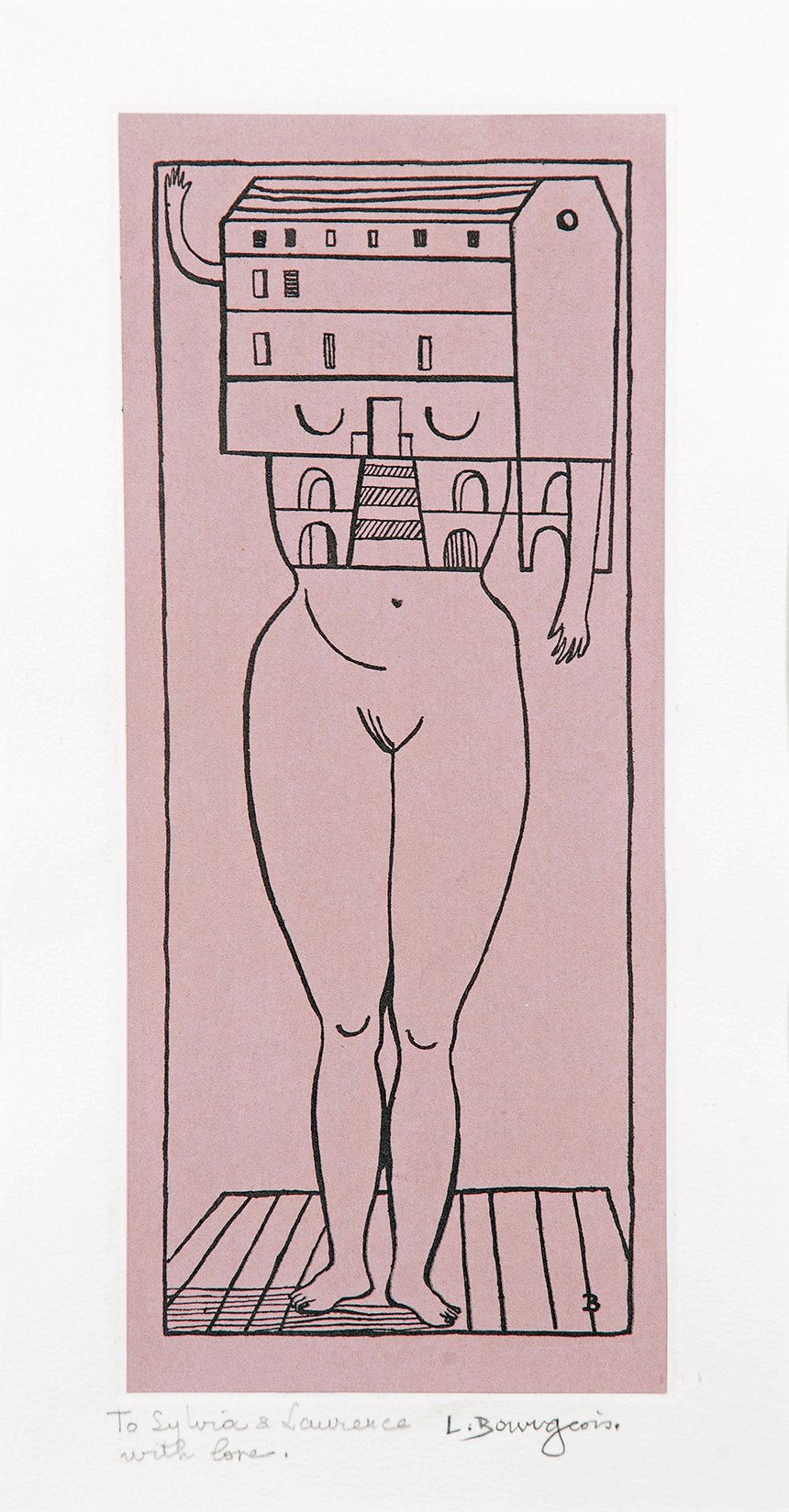
Louise Bourgeois
Femme Maison, 1984
Photogravure with chine collé, unique state,
10 x 4 ¼ inches (22 ⅜ x 16 ⅜ x 1 ½ inches framed)
Sylvia Sleigh Collection
2011.10
Femme Maison, which means both “woman-house” and “house-wife,” is one of Louise Bourgeois’s most recognizable motifs. For the artist, the home was closely connected to female identity. By combining residential architecture and the curvaceous female body, Bourgeois presented a woman who is obscured by the domestic realm that she simultaneously supports. This photogravure, printed in 1984, is taken from the artist’s original drawing of 1947. She returned to this theme many times.
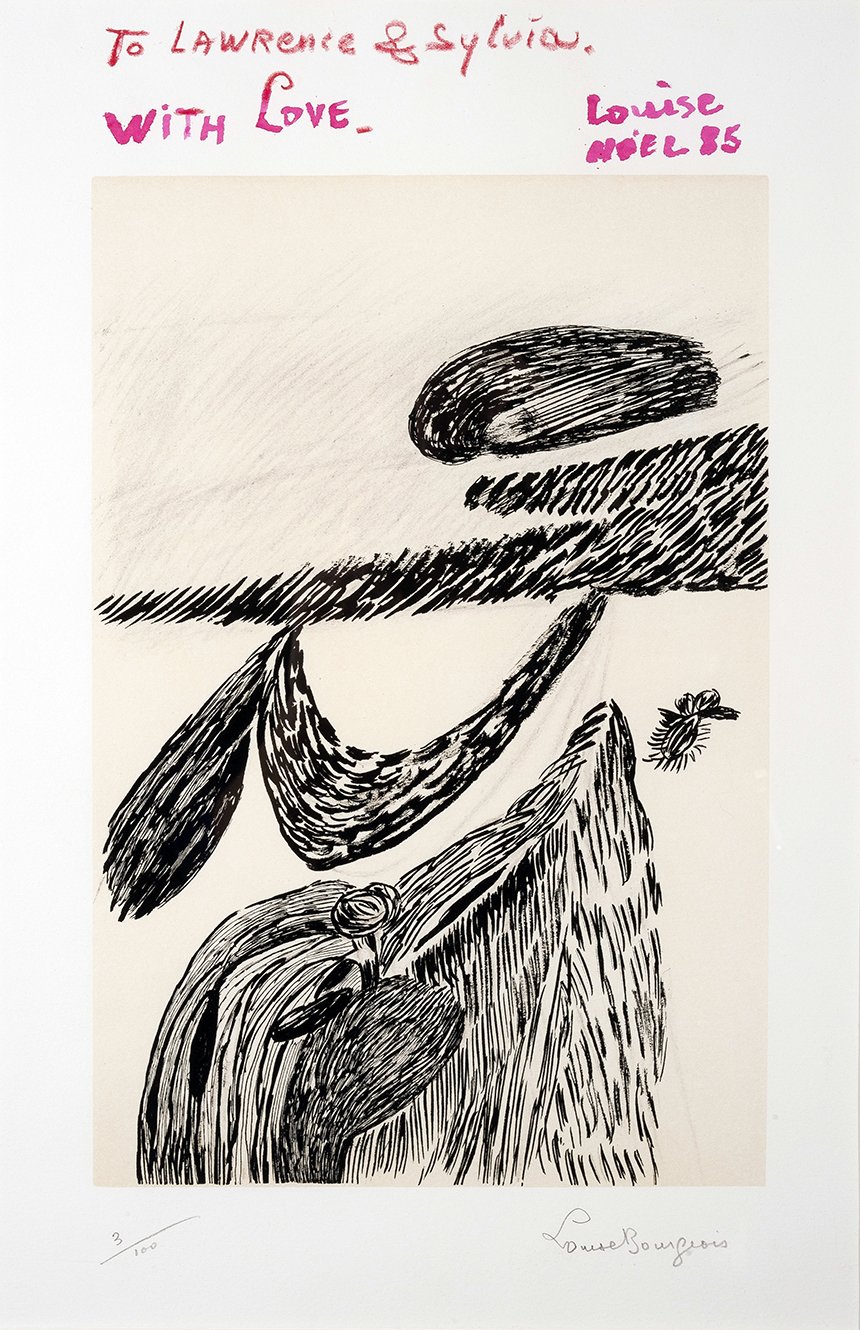
Louise Bourgeois
Inner Life, 1985
Lithograph, 3/100
12 ⅜ x 8 ⅛ inches (17 x 22 ¾ x 1 ½ inches framed)
Sylvia Sleigh Collection
2011.51
This photolithograph was issued in 1984 to coincide with a retrospective exhibition of Louise Bourgeois’s work. According to the artist, “This is like a snake plant … darting from one place to another. It is full of sproutings that point up … that will start others. It has a fantastic inner life … ready to spring … so impetuous and strong, but also erratic. At the right is a little animal, a yellowjacket. A yellowjacket can smell fear. If it is attacked, or thinks it will be attacked, it will dart.”
Louise Bourgeois (1911-2010) was born in France and moved to New York City in 1938. Before coming to the United States, she studied at Atelier Bissière, the École des Beaux-Arts, the École du Louvre, the Sorbonne, and the Académie Fénelon. In her later years, her psychologically complex sculptures and installations brought her international renown.
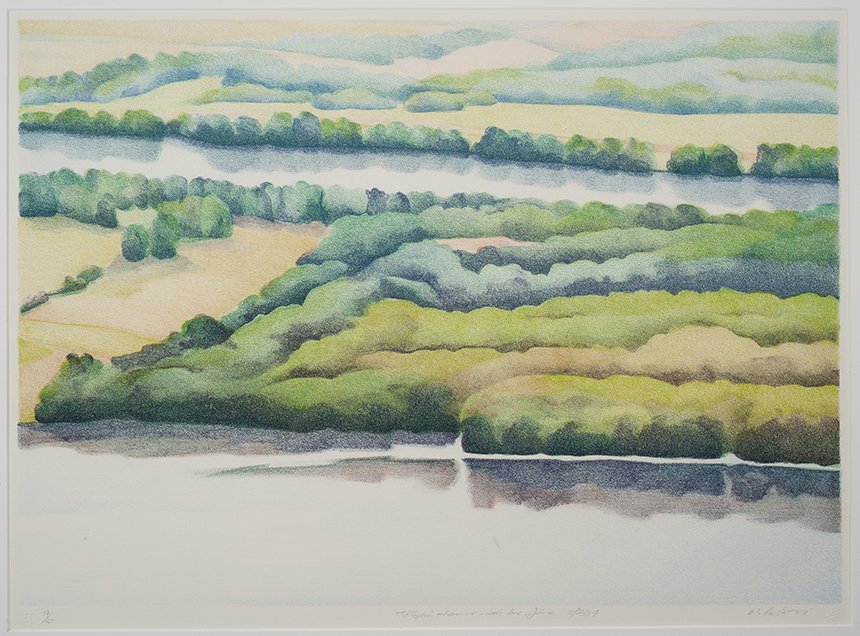
Diane Burko
#3, 1983
Color lithograph, edition 17/50,
17 ¾ x 23 ½ inches (23 ½ x 30 x 1 ⅜ inches framed)
Sylvia Sleigh Collection
2011.9
Using a wide variety of locations, Diane Burko focuses primarily on landscapes. This lithograph is from a series representing aerial views of the Delaware River and was based on her drawings in Prismacolor on Arches paper. More recently, Burko has focused on the effects of climate change on the natural environment.
Diane Burko (b. 1945) is a painter and photographer. She studied at Skidmore College (BS, painting and art history) and University of Pennsylvania (MFA, painting). She spent many years teaching at Community College of Philadelphia and is known for her research based art at the intersection of art and the environment.
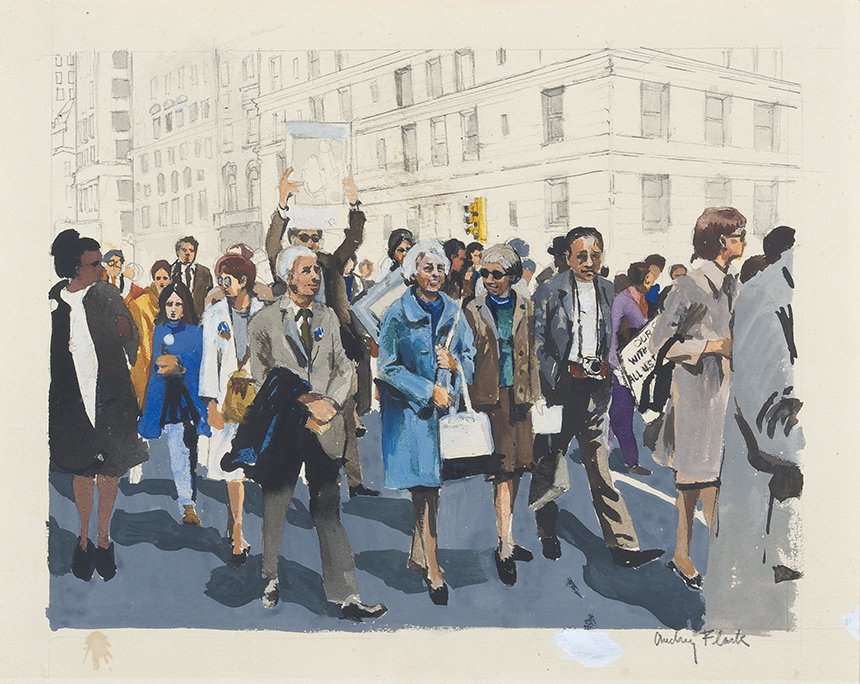
Audrey Flack
Demonstrators, c. 1967-68
Graphite and gouache on paper,
7 x 9 inches (15 ⅛ x 17 ¼ x 1 inches framed)
Sylvia Sleigh Collection
2011.15
In 1962–63, Audrey Flack’s paintings featured subjects that were drawn from magazines and other documentary photographs of current events. Around the time that Martin Luther King, Jr., was assassinated, Flack returned to the subject of social protest. Although their cause is not specified, the protestors in this work are directly related to the artist’s contemporaneous emphasis on depictions of antiwar demonstrations. Flack’s work implies the power of ordinary people to effect change by speaking out.
Audrey Flack (b. 1931) is a Photorealist painter and sculptor. She studied at Cooper Union, Yale University (BFA), and New York University (history of art). She has taught and lectured nationally and internationally.

Nancy Grossman
A Garden for Sylvia, 1966
Graphite on paper,
13 ⅞ x 21 ⅞ inches
Sylvia Sleigh Collection
2011.94
Although Nancy Grossman is known primarily for her sculptures of human heads with leather, zippers, spikes, and straps, her work is not limited to a single medium. This elegant pencil drawing features a flowering landscape with a bird and dragonfly. It was given to Grossman’s friend, the painter Sylvia Sleigh, who had a lifelong affinity for pleasingly irregular English gardens.
Nancy Grossman (b. 1940) is a sculptor, collagist, and assemblage artist who lives and works in Brooklyn, New York. She graduated from the Pratt Institute (BFA).

Lila Katzen
Untitled, c. 1971
Plexiglass, black light, electrical cord, wires, transformer,
6 ⅝ x 17 ¾ x 29 inches
Sylvia Sleigh Collection
2011.80a-b
Although she is remembered as a sculptor of large-scale works in metal, Lila Katzen experimented with industrial acrylic sheets and used light as a medium in works of the late 1960s and early 1970s. Her sculptures typically reveal an interest in bending and manipulating the material. In this work, she heated a thick sheet of Plexiglas and formed a curved and undulating surface. The addition of a black light enables the sculpture to interact with its environment.
Lila Katzen (1925 - 1998) was a painter and sculptor. She studied at Cooper Union (BFA, painting) and Hans Hoffman School of Art, teaching for many years at Maryland Institute, College of Art.

Alice Neel
Mother and Child, 1982
Color lithograph,
26 1/16 x 23 5/16 inches (impression), 31 1/16 x 27 15/16 (sheet)
Gift of Sharyn Finnegan
2023.8
Although she is now regarded as an important portrait painter of the twentieth century, Alice Neel only received serious recognition when she was in her seventies. This color lithograph is derived from an oil painting of the same name, which was created by Neel in 1967. The portrait represents Alice Neel’s daughter-in-law Nancy and granddaughter Olivia. As Neel explained, “Olivia was three months old and Nancy looks afraid because this was her first child. Olivia was very active.” Unlike many of her predecessors, Neel portrayed motherhood as a complex human experience.
Alice Neel (1900 - 1984) was a figurative painter. She studied at Moore College of Art & Design (then Philadelphia School of Design for Women) and participated in the Works Progress Administration Federal Art Project. The women's movement in the 1960s and 1970s revived interest in her work and she now has the fame that eluded her during most of her life.
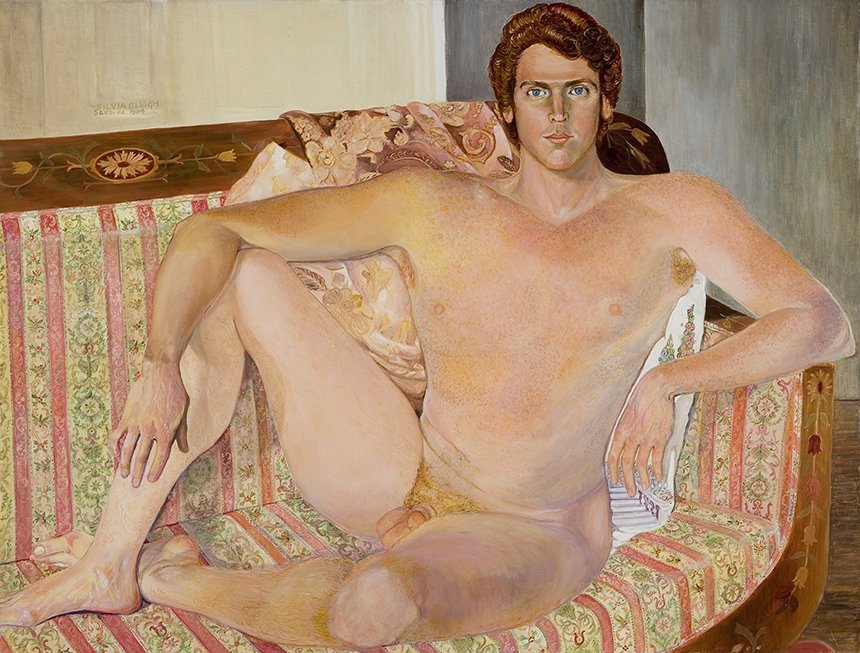
Sylvia Sleigh
Portrait of an Actor: Sean Pratt, 1994
Oil on canvas,
42 ½ x 55 ¾ x 1 ¾ inches (43 ½ x 56 ⅝ x 2 ⅛ inches framed)
Sylvia Sleigh Collection
2011.87
Sylvia Sleigh is widely recognized for her paintings of nude men in passive poses that were historically associated with women. In contrast to the tradition of male artists portraying anonymous, idealized, and often eroticized female nudes, Sleigh embraced the individuality of her subjects and treated them with dignity. Her portrait of the American actor Sean Pratt is unsparing in its nudity as he casually poses on a striped sofa.
Sylvia Sleigh (1916–2010) was born in Wales. She lived and worked in England until 1961, after which she was active in the United States. She studied at the Brighton School of Art. She was a founding member of SOHO 20 Gallery, an all-women’s cooperative in New York, and became well-known for painting male nudes in the passive poses that were traditionally reserved for women.
